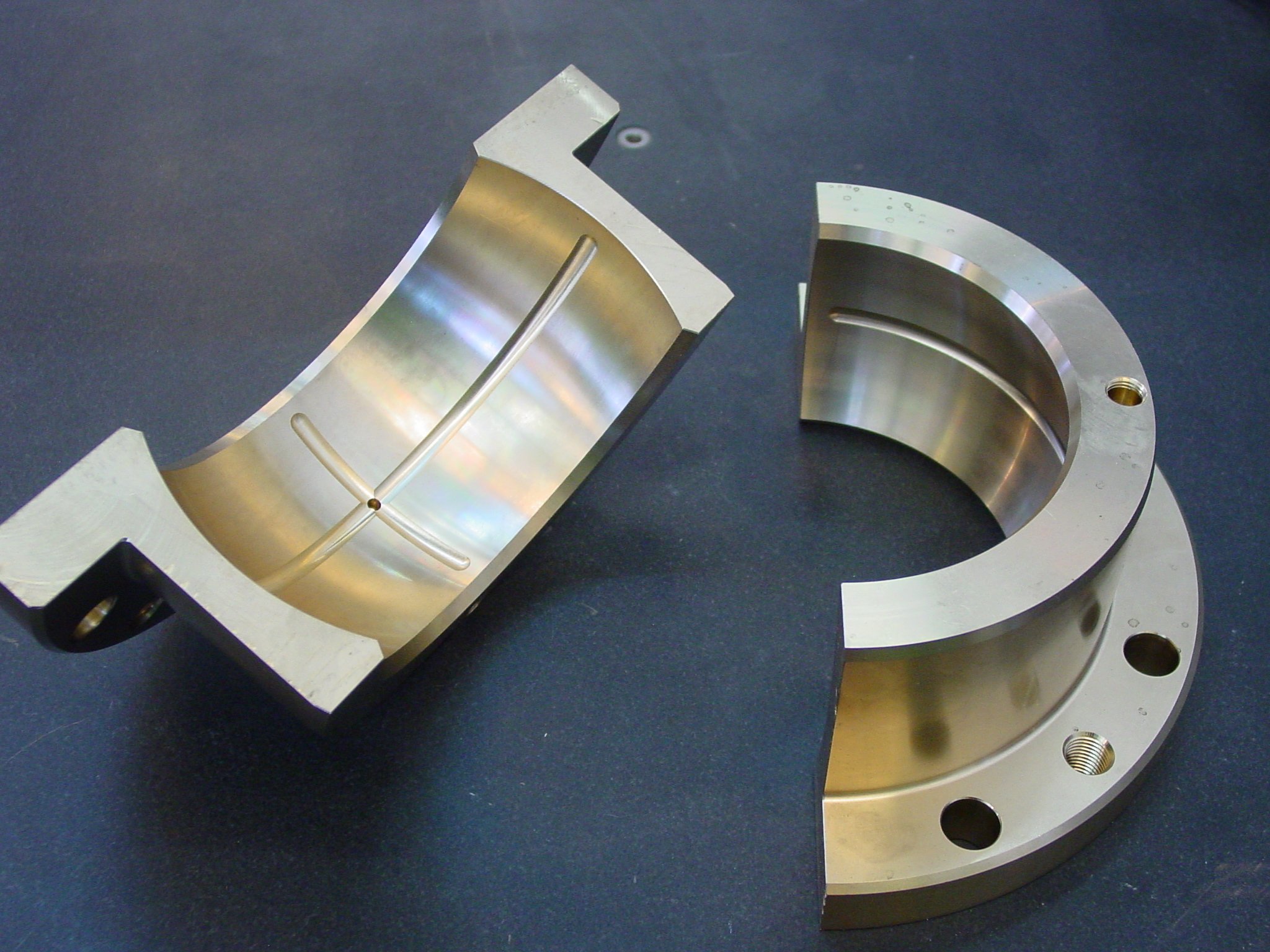Wear in bearings is usually the result of inadequate lubrication or the presence of contamination. Although some wear is inevitable, there are ways to keep the wear rate as low as possible and thus keep production costs low.
It is impossible to imagine machinery and equipment without bearings. In their simplest form, bearings can be traced back to ancient Egypt. Perhaps they are even older than the invention of the wheel. However, opinions differ on this. But one thing is certain: Today, bearings are used wherever there is relative movement between two surfaces. And this happens in pretty much all devices: From highly complex industrial systems to simple household devices. We have taken a closer look and shown what a plain bearing can do.
What is a bearing?
Bearings are components that guide components that move against each other. In rolling bearings, the shaft is supported by rolling elements that rotate with it; in slide bearings, the two components are in direct contact. This means the shaft slides in the bearing bushing or the bearing shells. This creates frictional resistance, which leads to wear. To minimize friction, there must be lubrication between the sliding surfaces.
.jpg?width=450&height=337&name=Bearing%20(1).jpg) Picture: bearing with lubrication grooves and
Picture: bearing with lubrication grooves and
thrust washer made of AMPCO® 18.23
Slide bearings have a very simple structure because they do not contain any moving parts. The shape is usually cylindrical. Installation in the housing takes place either as a sliding bush or as a sliding shell. The design of a bearing also differs according to the direction of force acting on the bearing depending on the application. There are radial bearings for radial forces and thrust bearings for axial forces. In simple terms, slide bearings are tribological elements that support loads and have direct contact with another part moving relative to them.
Wear and friction of bearings
Since the two contact surfaces are in contact, there is unfortunately also wear on the contact surfaces, which limits the service life of the bearing. The decisive factors for friction in bearings are load, sliding speed, operating temperature, and the roughness of the surface on which the bearing runs. Basically, three different types of friction are distinguished in this process:
- Dry friction: The two contact surfaces rub directly against each other. There is no lubrication. The size of the friction that occurs and the wear depend on the surface properties of the components moving against each other. There is a risk of galling. To prevent wear, low-friction material pairings are used or one of the two materials has a self-lubricating property.
- Liquid friction: There is no direct contact between the components. A lubricant serves as the separation. The extent of the friction depends on the structure of the lubricant. In continuous operation, a bearing with liquid friction operates practically wear-free. It is mainly used when durability and low energy loss are required, for example in the conversion of energy in generators.
- Mixed friction: There are both areas of contact of the components separated by the liquid film and direct contact areas. Mixed friction is friction that occurs between two surfaces sliding on each other when there is insufficient lubrication to allow fluid friction. It can also occur as a temporary condition at the start of a movement if, for example, the lubricant is not evenly distributed.
What are hydrodynamic bearings?
In a hydrodynamic slide bearing, the lubricating film is created by the rotary motion of the shaft/axis that in the beginning rests on the slide bearing. Initially, mixed friction is created between the shaft and the bearing as a result of the startup process. If the rotary motion increases, lubricating oil is supplied to the unloaded upper side and the pressure around the shaft is increased. This raises the shaft and results in fluid friction and thus a reduction in friction.
Therefore, the coefficient of friction is an important property when choosing the right materials for your bearing. AMPCO® alloys are perfectly suited for the job as they combine a low coefficient of friction with high wear resistance. Furthermore, they offer a high compression yield point and no adhesion with stainless steel. Typically AMPCO® 18, AMPCO® 18.23, AMPCO 21, AMPCO 45, and AMPCO® M4 are frequently used as bearing materials.
%20(1).png?width=600&height=400&name=Cover_AMPCO%20(4)%20(1).png) Picture: AMPCO® alloys for bearings
Picture: AMPCO® alloys for bearings
Want to learn more about wear resistance and why copper-based alloys are the right choice for your wear applications? Download our free technical paper «Wear resistant alloys – Guidelines and tips» now.





